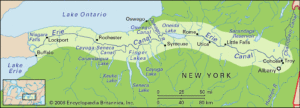Roughly 6,000 years ago the Mesopotamians built the first canals. These irrigation canals moved water from rivers to fields. The creation and management of their system sped the development of organized civilization and created the famed fertile crescent. Other river-based societies in India and Egypt also built extensive irrigation and water storage systems featuring canals.
Once civilizations mastered irrigation, their populations exploded. As city-states evolved into larger kingdoms and empires trade developed. While important, these early trade routes were limited by the capacity of pack animals. The introduction of wheeled carts improved capacity by more than 5 times. However, that required the building, maintenance, and defense of roads. As a result, most bulk trade continued to use river and sea-based routes. The vast opportunities of the hinterlands were scarcely tapped.
More than irrigation
A horse can pull as much as 50 times more weight in a barge than on a cart. At some point an inspired engineer and merchant put these two pieces of information together. Canals could do more than irrigate fields, they could also connect natural waterways together. While I don’t know where the idea originated, the most impressive of the ancient canal systems was China’s Grand Canal. The interlinking system of canals and rivers allowed water passage between Beijing and Hangzhou. At nearly 1115 miles (~1800 Km) the Grand Canal, parts of which are 2500 years old, is both the longest and oldest canal in use today.
Another major innovation in canal design was the Greek introduction of canal locks. By using a double gate engineers created a chamber in which they can raise or lower the water level. This allows canals to go over obstacles rather than bypassing or digging through them.
Heyday
The economic benefits of canals over land transport continued into the Middle Ages when the improving economy created stronger trading networks. Rulers in western Europe, Asia, and Africa built irrigation and transport canal systems. In the 18th and early 19th century canals were the superhighways of the world. By bringing the bounty of the hinterland to the coasts, they helped accelerate the Industrial Revolution.
That same revolution that brought canal building to its zenith also signaled the decline of the canal building. The invention of the steam locomotive and the railroads offered an even more efficient way to move cargo across long distances. The final round of canal building was driven more by shortening sea routes, e.g., Suez and Panama, than access to continental interiors. While canals that connect waterways remain important, many of the internal transport canals have been abandoned.
Today
While not as long or old as the Grand Canal in China, the Erie Canal, which connects the Great Lakes to New York City remains in operation. It no longer follows its original path through cities like Rochester, but you can still travel it, as the famous song says, ‘from Albany to Buffalo.’ To be fair, I suspect more people travel along the towpath than in the water. Most of the boat traffic consists of kayakers, private boats, and a few commercial tour services.
With that in mind, today’s featured map is of the current Erie Canal system and comes courtesy of Encyclopaedia Britannica.
As an added bonus, as part of an expansion project Genesee Brewing purchased a dozen 2000 barrel fermentation tanks. At 60 feet tall and 20 feet in diameter, they were too big to move via rail or highway. The company chose to use the Erie Canal for the last 225 miles of the tanks’ journey. Below is a picture (snipped from Carl Crumley’s YouTube video) of three tanks moving through Pittsford village. The red and green boat in the background is one of several ‘authentic’ canal boats available for rent.
As always thanks for reading.
Armen



